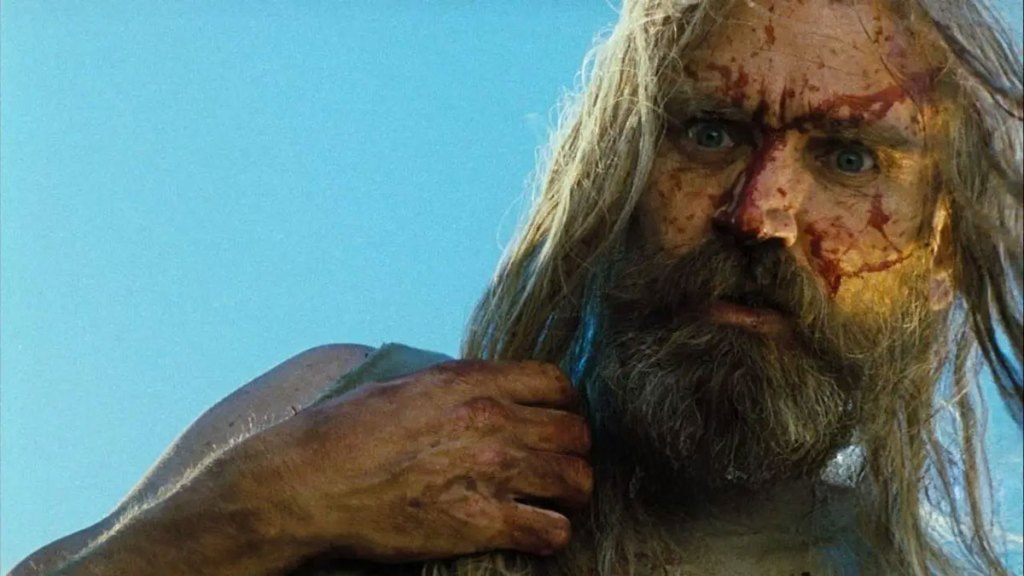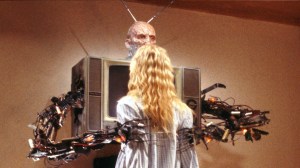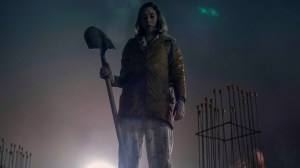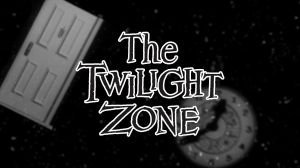As a massive horror nerd, there are hundreds of titles that run through my head when someone asks me to pinpoint my favorite horror movie. There’s a weird anxiety that comes with never wanting to leave something meaningful off of the list, and favorites can change depending on the mood and the day. Not to mention, the horror genre is rich with works to choose from. They all make strong cases for why they should be at the top, and those arguments are never wrong, exactly. While the list of favorites is long, when I have to sit back and really think about my answer as to what lands at the top, I always circle back to Rob Zombie‘s The Devil’s Rejects, which is celebrating its 20th anniversary this year.
Videos by ComicBook.com
Zombie has been a divisive filmmaker since his 2003 feature directorial debut, House of 1000 Corpses. Whatever the expectations were for his follow-up, suffice it to say no one could have anticipated that he was about to show off his expanding set of filmmaking and storytelling skills to deliver what many fans consider to be his best movie to date.
Zombie Found His Footing as a Filmmaker With The Devil’s Rejects
There are plenty of horror sequels that are better than their original installments, and The Devil’s Rejects stands out as a prime example of improving upon what came before. House of 1000 Corpses and The Devil’s Rejects are of a particular taste; neither of these brutally sadistic movies is for everyone, but they are memorable — and cult classics — for very different reasons. Zombie’s experimentation with his first film, infused with his experience directing music videos, was a big swing that didn’t land for a chunk of audiences. It felt like it was for the most gnarliest of horror fans who occasionally crave a lot of weirdness and dark comedy in addition to over-the-top violence and unpredictable villains who are living their best lives as we feel a little uncomfortable (or entertained) watching them trap and kill their unsuspecting prey.
House of 1000 Corpses was made for viewers like me who hold space for this type of unpolished, psychedelic horror, but it doesn’t compare to discovering what Zombie really was capable of as a filmmaker. When the rock musician decided to return to his infamous serial-killing Firefly family just two years later, fans were likely expecting more of the same funhouse-style horror from the original. Instead, what we got was a remarkable tonal shift as The Devil’s Rejects was a grittier, visceral, grindhouse aesthetic, horror-western road movie set in the late 1970s as Zombie paid homage to films of that era. Zombie’s growth as a filmmaker between House of 1000 Corpses and The Devil’s Rejects was a refreshing surprise and, to this day, delightful to behold when I rewatch them back-to-back. No one expected him to make such a sharp departure stylistically from his movie debut, especially for its own sequel, and many of those elements he established are paralleled in Zombie’s later works.
Unlike House of 1000 Corpses, The Devil’s Rejects is not just shock-and-awe or an aggressive overstimulation of jarring imagery and sounds. The movie, never abandoning its unapologetic sadism and violent tendencies — or dark humor — takes its time with plot and characters. There’s more of a beating heart under the madness as the audience goes on a ride from hell with Otis (Bill Moseley), his sister Baby (Sheri Moon Zombie), and their dad Captain Spaulding (Sid Haig) as the dysfunctional murder family goes on the run after law enforcement descends on their farmhouse in the opening scene. The biggest surprise was Zombie’s attempt to humanize his villains as the audience spends time with them (like he later did with the iconic character of Michael Myers in his Halloween movies, which was even more controversial), but more on that later.
The Devil’s Rejects Soundtrack Is Undeniable
Zombie’s career as a musician and his love for music in general are crucial to what made The Devil’s Rejects so special, and the soundtrack is an indelible part of the movie’s identity. The soundtrack is a forever favorite, much like the movie itself, with tracks carefully selected by the filmmaker that create a specific tone and place in time, and are arranged to great effect throughout the film. The biggest example that probably comes to most fans’ minds first is the epic last scene that plays out patiently to Lynyrd Skynyrd’s lengthy and beloved album version of “Free Bird,” helping to set the atmosphere of a final showdown between the Firefly family and law enforcement.
Other songs, such as The Allman Brothers Band’s “Midnight Rider,” Joe Walsh’s “Rocky Mountain Way,” and David Essex’s “Rock On,” are major highlights in The Devil’s Rejects. However, it was the legendary British rocker Terry “Superlungs” Reid, who sadly died on August 5th at the age of 75, who became the musical throughline of the film. In 2013, Zombie shared that his favorite album is Reid’s Seed of Memory, and three tracks from the 1976 album — “Brave Awakening, “To Be Treated Rite,” and “Seed of Memory” — are used in The Devil’s Rejects. For many horror fans, Reid became synonymous with Zombie and The Devil’s Rejects, and his “Seed of Memory” hit playing over the ending credits is one of the most powerful moments of the entire movie.
The Character Work Is Unexpectedly Effective

Spending the majority of the time with the Firefly family gets the audience uncomfortably close with them, allowing us to see them in various settings (mostly, bickering with each other as tensions run high). Any questions fans may have had about how they behave as a family unit outside of the rare moments when they are not terrorizing or slaughtering people are addressed, spanning from threats of killing each other to genuinely enjoying each other’s company. The most intriguing character study in The Devil’s Rejects, though, is Moseley’s Otis, who at any point ranges from a long-suffering older brother screaming at his family or random strangers, complaining about having to take a few minutes to stop for ice cream on the road, constantly loud and frenetic, ranting and raving whether he’s killing people or not.
Then, there’s the truly terrifying Otis, who is arguably the scariest of this murderous family. The man who strips all power away from his victims and truly owns the monster that he is. There’s a scene in particular when he’s seconds away from bludgeoning a man to death before carving up another, where he’s suddenly calm and quiet. Face bloody and eyes cold, Otis pulls his long hair aside so he can stare down at his prey before delivering the chilling line (roughly taken from real-life Charles Manson follower and killer Charles “Tex” Watson), “I am the Devil, and I am here to do the Devil’s work.” The way he says it, you believe every word — and he does, too.
Besides the focus on the characters in general, shifting away from the Fireflys being the main antagonists to even for a second showcasing them as victims themselves is a stunning feat that Zombie manages to pull off briefly in the third act of the film. This is only possible because of William Forsythe’s diabolical Sheriff John Wydell, who is on a warpath to avenge his dead brother George, the cop who was killed by Mother Firefly (Leslie Easterbrook) in House of 1000 Corpses. Who could the audience possibly despise more than these truly depraved serial killers who get off on tormenting, sexually assaulting, using skin and body parts to make macabre items Ed Gein-style, and torturing people? Well, how about an equally brutal, unhinged, self-righteous, dirty cop driven by revenge and violently obsessed with Elvis Presley, who believes he is on a mission from God?
When Wydell’s plans finally come to fruition and he has Otis, Captain Spaulding, and Baby tied up and at his mercy, he shows them none. And part of you can’t blame him; he staples images of their victims to their skin as a reminder of the terrible things they have done. At the beginning of the movie, they establish that the Fireflys have killed at least 75 people (not to mention the kidnapped people in cages screaming when Baby and Otis flee from their farmhouse, who will require more than a lifetime of therapy). Amazingly, though, as the Fireflys scream and cry in pain the longer Wydell tortures them, you find yourself feeling a little bad for them, even if only for the briefest moment, because of how much time we have spent with them. Whether it’s a glimpse of empathy or a feeling that sticks with you a little longer, the fact that Zombie made some audiences feel any sort of warmth towards the trio, even when they are still unapologetically evil, is impressive. And somehow, it works.
The Ending Is as Close To Perfect as You Can Get
The ending feels as though everything Zombie envisioned for this movie was all about the final sequence. The Devil’s Rejects starts with a bang and ends with one, coming full circle. The story culminates in a blaze of glory gunfight between the Firefly family and the police, who have finally caught up with them. “Free Bird” plays as the bloodied and injured trio makes their escape from the now dead Wydell, only to come to a stop on the freeway as they see the blockade of law enforcement in the distance, and they know this is the end. They each grab a weapon, and Otis drives the car straight at the cops as bullets go flying and the killers are gunned down. Fading to black and transitioning into Reid’s “Seed of Memory” as the camera pans over the freeway and rolling hills while the credits roll is a thing of beauty.
The ending is perfect, for me, not just because of the music, cinematography, or thrilling confrontation, but because this is what the Fireflys deserve (and, yes, I’m ignoring the existence of the third film in the trilogy, 3 From Hell (2019), because The Devil’s Rejects should have, in my opinion, remained their curtain call). The depth of their depravity is ever-present, making whatever sympathy we felt as they were being brutalized slip away into a sense of justice that feels fitting: they go out bloody, violent, and painfully.
Across the first two movies, “The Devil’s Rejects” were depicted as the most heinous serial killers and predators, fully aware of who and what they are, without a single morsel of guilt because their violence entertains them. The Firefly family never earned the chance to ride off into the sunset, free to continue their bloodshed. Just as Sheriff Wydell paid the price for crossing the line, Otis, Baby, and Captain Spaulding meet a very satisfying ending. The cinematic and emotional way it was filmed, accompanied by the right music and style, was a bonus for fans who journeyed into a bizarre heart of darkness with Zombie and continue to do so 20 years later.
The Devil’s Rejects (and the entire Firefly Family trilogy) is available to stream on Cinemax.









